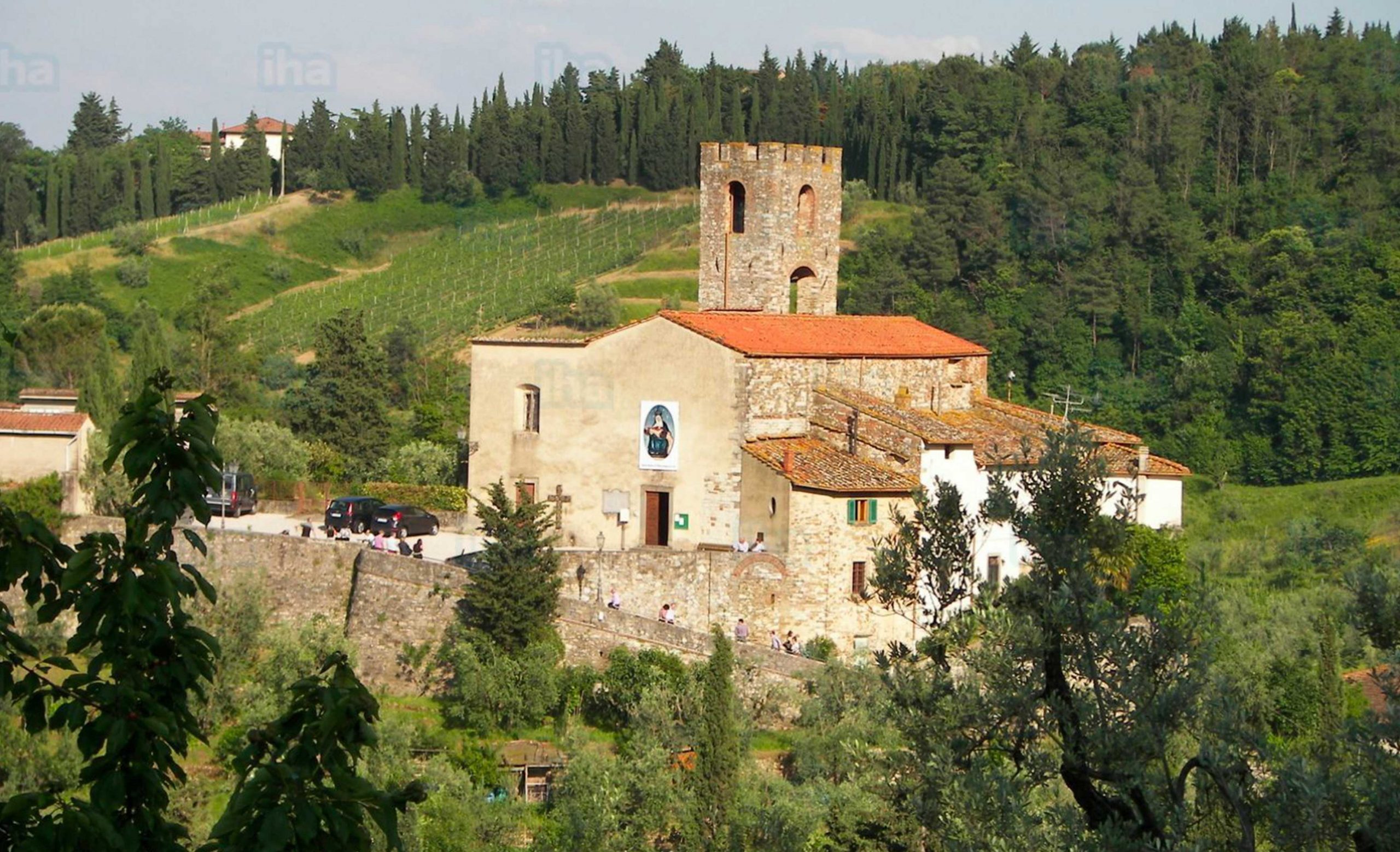The little to wn of Bacchereto is located on the east side of Montalbano mountain.

In an act of 1138 the presbiter Ildebrandus de bachereto appears among the names of an act with which the rights to the castle of Bacchereto are given to the Bishop of Pistoia: this is the first document that attests to the presence of a church in this area. In the middle of the Duecento the rural town of Bacchereto included the areas surrounding the churches of San Giusto in Montalbano and San Biagio a Fusciano as well as the nucleus of the castle with the church of Santa Maria.
The parish church was of popular origin: the choice of the rector belonged to the people, but with the consent of the Bishop of Pistoia. This church is mentioned in a 1219 Bull by Onorio III but it is missing in a previous Bull that of Innocenzo III in 1133. In a fourteenth century document the town is described with these words: castrum cum muris, merli set aliis muris circumcirca .In the Liber Focorum of Pistoia this small town is divided by chapel and has 193 fireplaces (nuclear families) of which 9 nobiles, 30 pauperes e 5 nihil habet.
Ownership was contested between Florence and Pistoia and Bacchereto was assigned to Florence with Artiminio and Carmignano in 1329.
In the fourteenth and fifteenth centuries the ceramic industry flowered and there were six kilns active here, one of which is still active today. Unfortunately, aside from a few reports in the Archivio di Stato di Firenze, we have very little information about the artisans who worked here. We know from their work that they altered their patterns to adapt to the style of different eras, often borrowing from the style of Montelupo or Florence. The flowering of the ceramic industry in an area far away from the principle streets of communication is perhaps due to the presence of the monks in the close by abbey of San Giusto, who, recognized that there was quite a bit of good quality clay available in this area and introduced the art of ceramics to the town.

The parish of Santa Maria Assunta, overlooks the town. It has a modest facade ties it to the compagnia del Corpo di Cristo, and was realized in the first half of the eighteeen hundreds. The campanile-tower emerges behind the church and is the only part of the castle walls that we can see today. The classicized interior is the result of a remodeling done from 1835 to 1840. The ceiling was decorated by Valinani. in the adjoining Compagnia there is a beautiful canvas of the Teaching of the Eucarest which is an antique copy of the more famous painting by Federico Barocci, which is conserved in Santa Maria sopra Minerva in Roma.
Before the town a narrow street leads to villa Banci, the farm of Bacchereto, which was restructured in the late 1800s,but was originally built in the Renaissance. The Villa-farm has three sides and opens onto a courtyard, from which you can see the late fourtee- hundred structure in the center and an interesting loggia in the corner of the side that looks onto the valley. After going through the town one reaches Casa Toia, a solid construction built between the thirteenth and fourtheenth centuries, tradition has it that this was the house of Lucia di Zoso, Leonardo Da Vinci’s maternal grandmother and it is said that the young Leonardo spent a great deal of his youth here.





